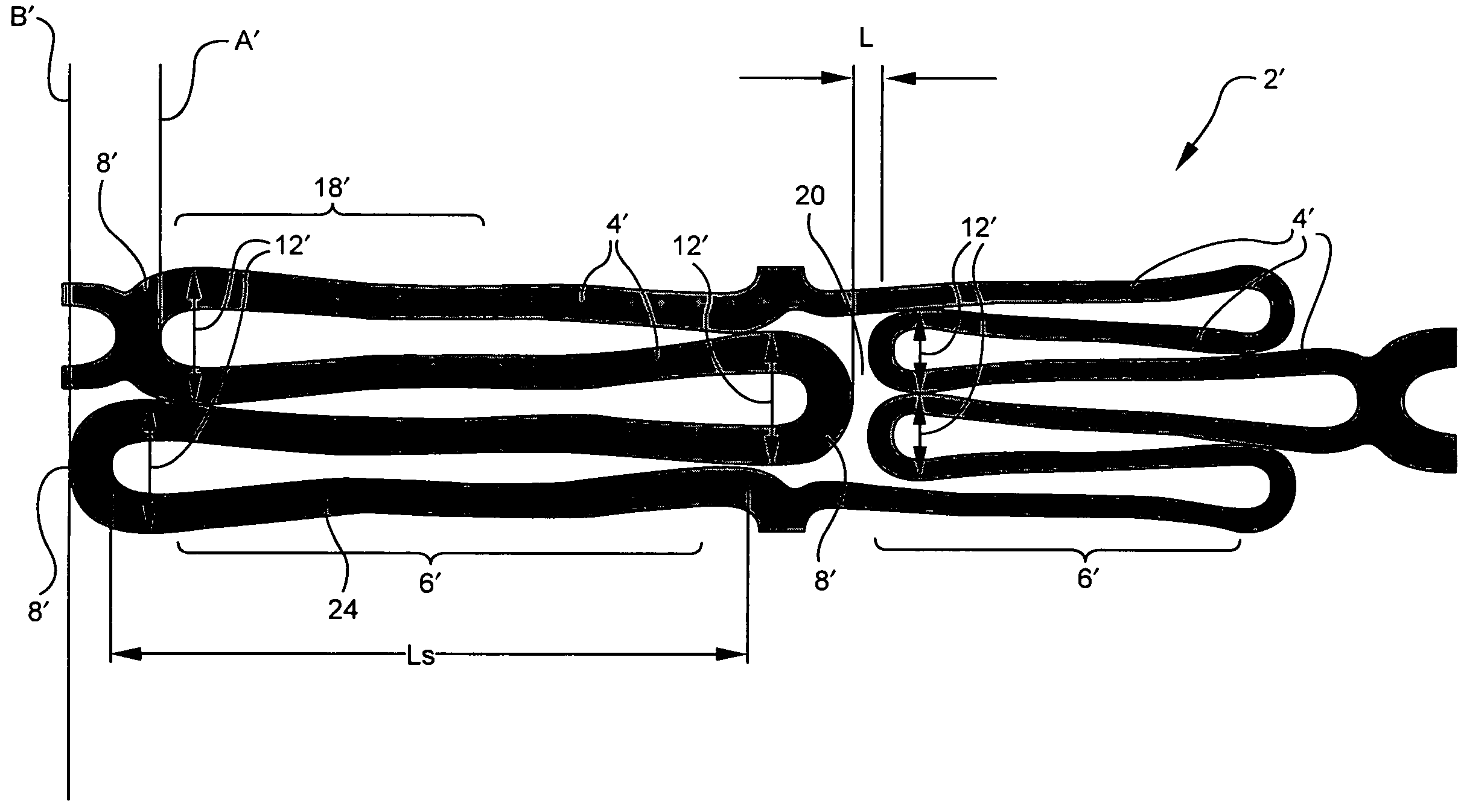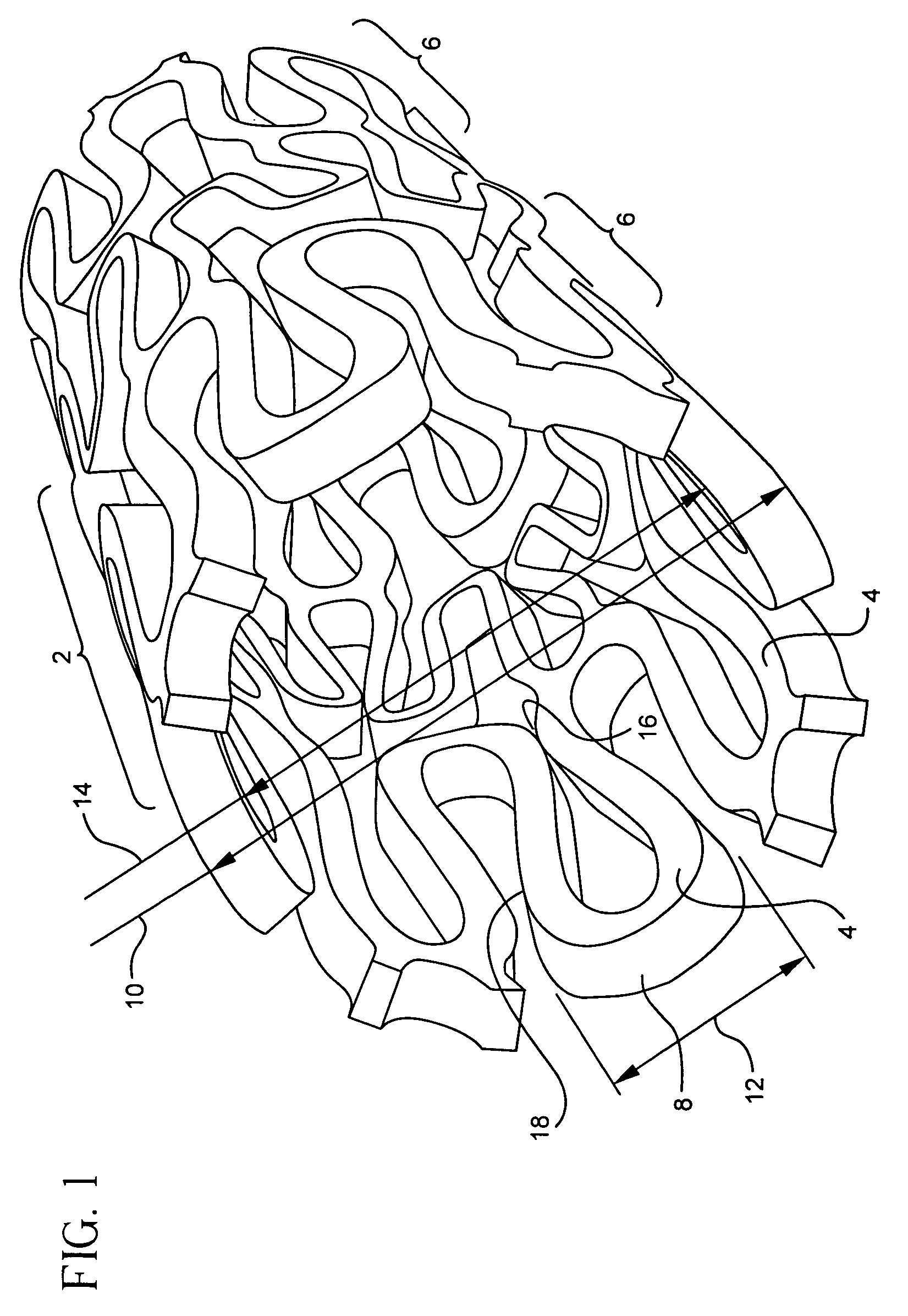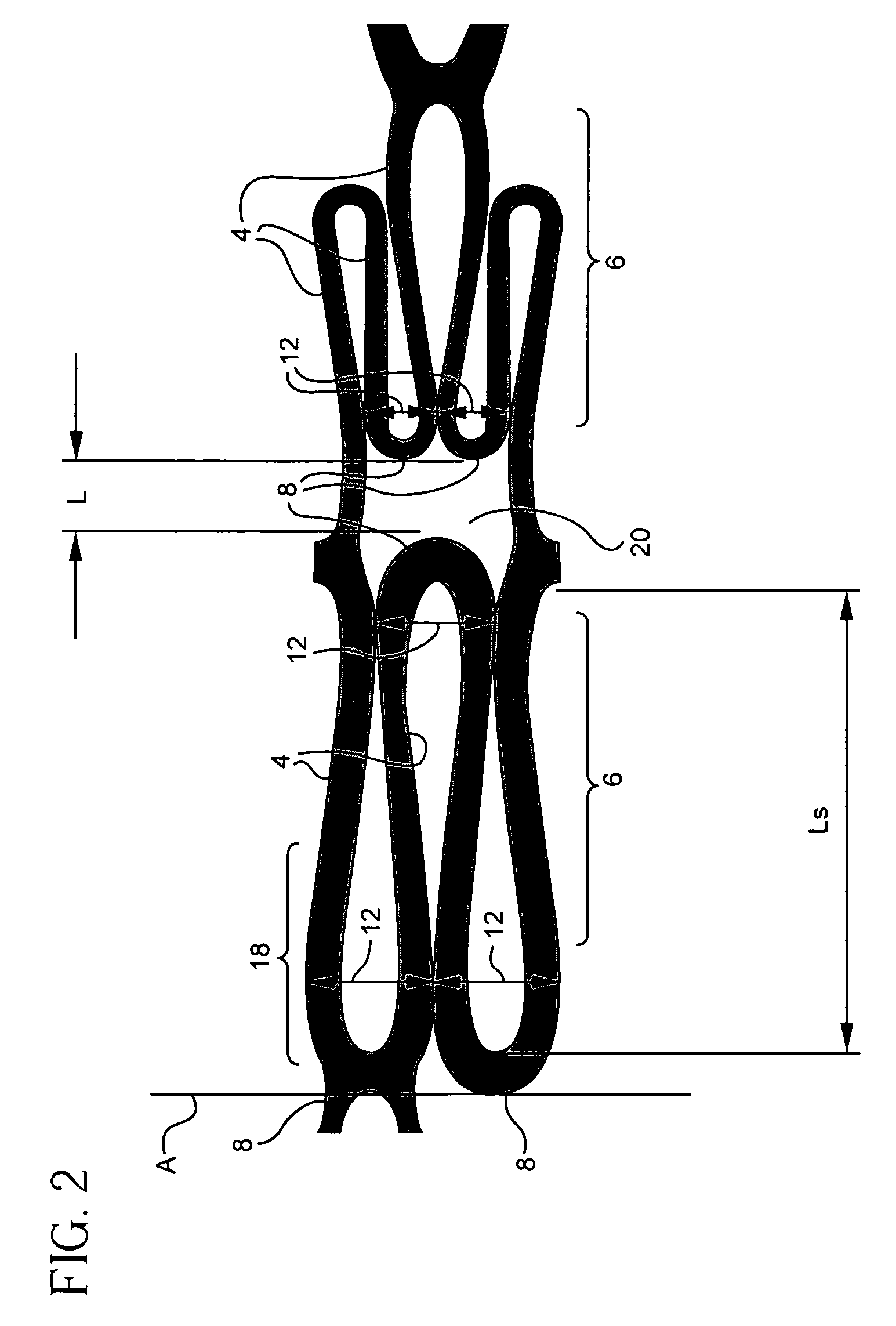Stent having struts with reverse direction curvature
a technology of struts and struts, which is applied in the field of stents, can solve the problems of permanent deformation of stents and inability to fully expand when deployed, and achieve the effects of increasing the expansion/compression ratio of stents, and reducing the risk of fractur
- Summary
- Abstract
- Description
- Claims
- Application Information
AI Technical Summary
Benefits of technology
Problems solved by technology
Method used
Image
Examples
Embodiment Construction
[0028]The present invention is preferably used with self-expanding stents, but is not limited to applications involving only self-expanding stents. The following detailed description will describe embodiments involving self-expanding stents, however, variations of the invention may be used with balloon-expandable stents and the like.
[0029]Self-expanding stents may be delivered to the deployment site using a delivery catheter system balloon catheter. The self-expanding stent is typically placed within a tube located at the distal end of the catheter that places physical limitations on the stent. The tube places physical limitations on the stent and retains the stent in its compressed state until it reaches the deployment site. It is desirable to compress the stent to its smallest possible diameter to minimize the profile of the delivery system. This minimized profile allows the delivery system to navigate the stent through narrow restrictions, where ultimately the stent is deployed a...
PUM
 Login to View More
Login to View More Abstract
Description
Claims
Application Information
 Login to View More
Login to View More - R&D
- Intellectual Property
- Life Sciences
- Materials
- Tech Scout
- Unparalleled Data Quality
- Higher Quality Content
- 60% Fewer Hallucinations
Browse by: Latest US Patents, China's latest patents, Technical Efficacy Thesaurus, Application Domain, Technology Topic, Popular Technical Reports.
© 2025 PatSnap. All rights reserved.Legal|Privacy policy|Modern Slavery Act Transparency Statement|Sitemap|About US| Contact US: help@patsnap.com



